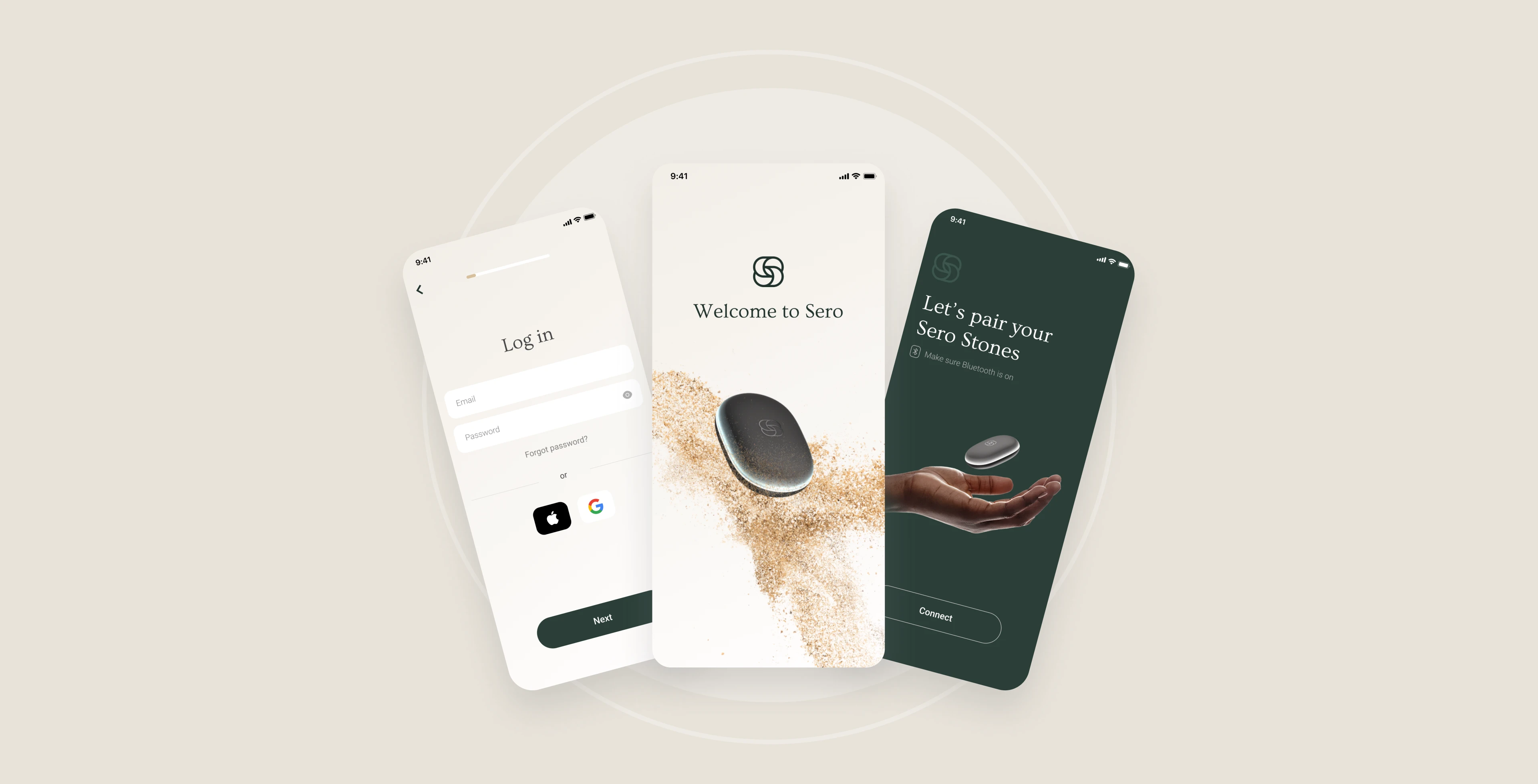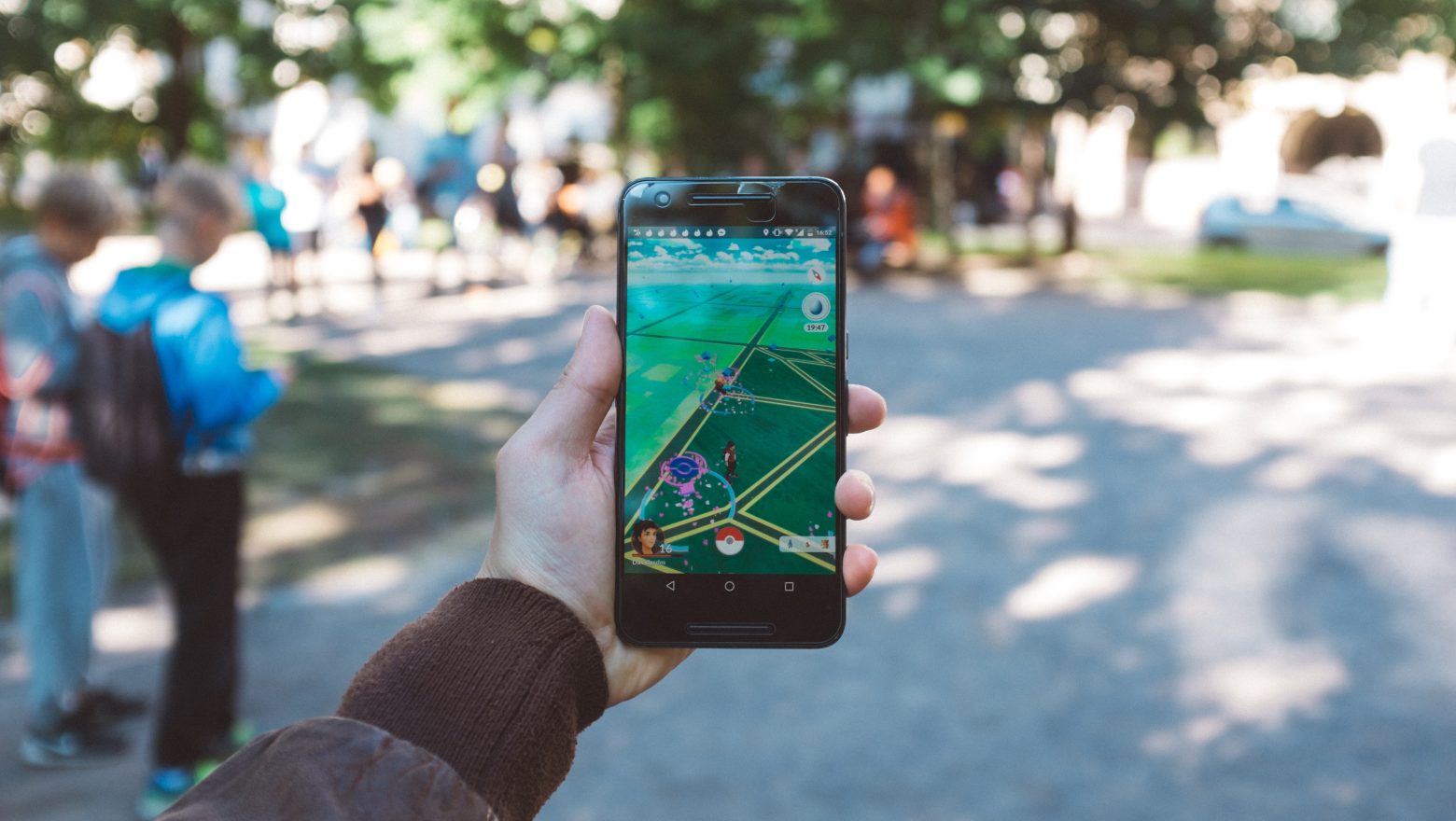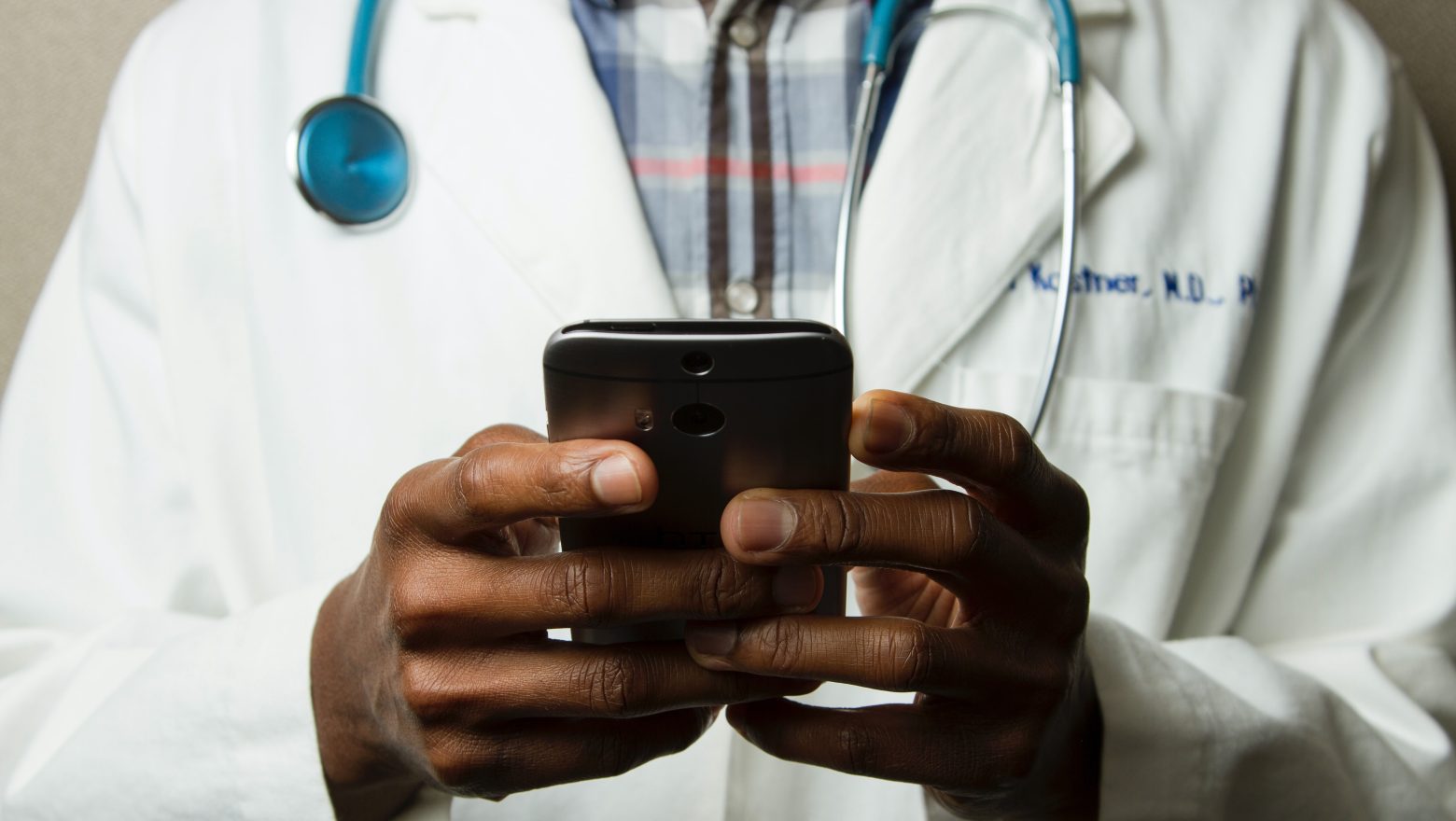All You Need To Know About Mhealth Apps in 2024
What is mhealth?
mHealth, or mobile health, is a term that’s buzzing a lot these days. It’s all about marrying cutting-edge technology with the healthcare field. Think about it—opting for healthcare app development isn’t just a trend; it’s becoming essential. For example, the mHealth market is projected to experience a growth rate exceeding 22% CAGR until the year 2032.
Now, you might be familiar with eHealth, where computers or mobile devices come into play to support public healthcare effectively. Well, mHealth is pretty much a branch of that. Imagine having the power to track and monitor all sorts of clinical info and community health data right at your fingertips, updated in real-time by healthcare pros.
What is mhealth? Over the past few years, we’ve seen a surge in mHealth apps popping up globally, all designed to enhance medical access and patient care. But that’s not all these apps do. They streamline the lives of healthcare workers too. With mHealth apps, you can kiss those long queues goodbye, get personalized meal plans, secure your medical history, plan out workouts and meds, and keep an eye on various health symptoms, all without breaking a sweat. Pretty handy, right?
We’re diving into the world of top-tier healthcare software that’s transforming the industry. Plus, we’ve put together a book that gives you the lowdown on exceptional digital health products like Calm, MyFitnessPal, and Flo. It’s like having a backstage pass to discover the secrets behind these successful healthcare software systems and their impact on the market.
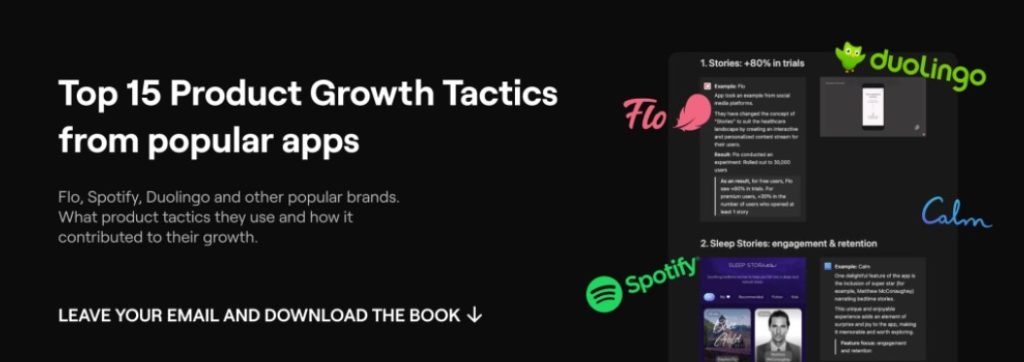
Download Top 15 Product Tactics that use popular Digital Health Brands for Growth
Trends in Mobile Health Apps
Let’s dive into the current trends in mobile apps in healthcare industry, which are totally reshaping how we manage our health and wellness. It’s like having a mini doctor in your pocket!
- Telehealth takes the lead. With the world going digital, telehealth apps are skyrocketing in popularity. These apps let you chat with doctors, schedule appointments, and even get prescriptions—all from the comfort of your couch. It’s like FaceTime but with your doctor!
- AI and machine learning. AI is not just for sci-fi anymore! Mobile apps in healthcare industry are now using AI to offer personalized health insights and advice. Imagine your app nudging you when it’s time to hydrate or take a break from the screen—smart, right?
- Wearable integration. Your smartwatch does more than count steps or notify you about texts. Health apps now sync with wearable devices to track everything from your heart rate to sleep patterns, giving you a holistic view of your health every day.
- Mental health support. With rising awareness about mental health, apps focusing on mental well-being are becoming increasingly common. These apps provide resources for stress management, meditation, and even connect users with therapists via text or video.
- Data security enhancements. With great power comes great responsibility, especially when it involves your health data. Enhanced security features are becoming a standard in health apps, ensuring your sensitive health information stays safe and private.
- Community and social engagement. Imagine a social network but for health buffs. Some health apps now offer community features where you can share milestones, join challenges, or simply get support from others who are on the same health journey.
- Chronic condition management. Apps specifically designed to manage chronic conditions like diabetes or hypertension are on the rise. These apps help track symptoms, medication, and even connect patients with specialists in real-time.
These trends show that mobile health apps are not just about tracking; they’re about providing comprehensive health management tools right at your fingertips.
Advantages of mHealth apps
Let’s chat about the benefits of mHealth apps—these nifty little tools that are transforming our smartphones into pocket-sized guardians of health:
– Convenience at your fingertips. Forget the days of waiting weeks for a doctor’s appointment. mHealth apps bring medical advice, health monitoring, and appointment scheduling right to your phone. Whether it’s 2 AM or you’re on a remote island, health advice is just a few taps away.
– Personalized healthcare. These apps are like having a personal trainer, nutritionist, and nurse all rolled into one. They track your personal health data and provide tailored advice just for you. It’s like your health regimen is getting a custom-fit suit—perfectly tailored to your needs.
– Increased patient engagement. What is mhealth technology? It’s about patients. mHealth apps keep you in the driver’s seat of your health journey. With interactive features like medication reminders, symptom trackers, and motivational notifications, you’re more likely to stay engaged and proactive about your health.
– Better access to healthcare. For those living in rural or underserved areas, mHealth apps can be a game-changer. They break down geographical barriers, providing access to healthcare professionals without the need for travel.
– Improved health outcomes. With continuous monitoring and real-time data, managing chronic conditions becomes more effective. mHealth apps can lead to better disease management, fewer hospital visits, and overall improved health outcomes.
– Cost-effective. By reducing the need for physical consultations and enabling remote monitoring, mHealth apps can significantly lower healthcare costs. They help catch issues early, potentially avoiding costly treatments down the line.
– Empowerment through education. Many mHealth apps include educational materials that help you learn more about your health conditions and treatments. Knowledge is power, and these apps equip you with the knowledge to make informed decisions about your health.
Classification of mhealth applications
Let’s dive into the diverse world of mhealth applications and mhealth examples. It’s like a digital health fair where there’s something for everyone, whether you’re a fitness newbie, a chronic disease warrior, or just trying to keep tabs on your health. Here are some of the different types of mHealth apps you might stumble upon:
– Fitness trackers. These are the cheerleaders of the mHealth app family. They monitor your physical activity, count your steps, track your runs, and even analyze your sleep patterns. It’s like having a personal coach in your pocket, cheering you on as you hit those fitness goals.
– Health monitoring apps. Got a specific condition like diabetes or hypertension? These apps keep an eye on your vital stats like blood sugar levels, blood pressure, or heart rate. They’re like vigilant guardians, always watching to ensure you’re within healthy limits.
– Medication management apps. Ever forget to take your meds? We’ve all been there. These apps are here to remind you, track your medication schedule, and even alert you to potential drug interactions. They’re like that super-organized friend who never forgets a birthday—only it’s your pills they’re keeping track of.
– Telemedicine apps. No time to visit the doctor? No problem, here one from the health apps list! Telemedicine mobile health apps connect you with healthcare professionals via video calls, messaging, or phone calls. It’s like having a doctor’s visit from the comfort of your couch.
– Mental health apps. For those days you feel like you need a mental tune-up, these apps offer resources ranging from stress management techniques and meditation guides to therapy sessions with professionals. They’re like a soothing balm for your mental well-being.
– Women’s health apps. From tracking menstrual cycles to guiding you through pregnancy, these apps focus on women’s health needs. They offer personalized insights and tips, making them the go-to pals for every stage of a woman’s life.
– Nutrition apps. Trying to make sense of your diet? Nutrition apps help you track what you eat, analyze your nutritional intake, and even provide meal suggestions. They’re like having a dietitian on demand, always ready to help you make healthier food choices.
– Chronic disease management apps. These are the strategic planners of the app world, helping manage long-term health conditions with tracking tools, educational content, and tailored advice. They work tirelessly to keep you one step ahead of your condition.
Each type of mHealth app has its unique way of making healthcare more accessible, personalized, and manageable. Whether you’re looking to improve your physical fitness, manage a health condition, or just get some peace of mind, there’s likely an mHealth app that fits your needs. Isn’t it amazing how our smartphones can do so much more than just make calls and send texts? They can actually help us lead healthier lives!
Mobile health application development
Let’s dive into dev and improving the user experience (UX) & user interface (UI), because let’s face it, no one likes a clunky app, especially when it comes to your health!
- Market and User Research
First things first, to spot issues and refine UX/UI, we conduct thorough market and user research. We chat with stakeholders and gather all the juicy details needed for a smooth healthcare app experience.
- How Might We (HMW) Notes
Once we’ve soaked up all that info, we jot down HMW notes. Ever heard of them? They’re gold in the Design Sprint world, used to turn problems into opportunities. Imagine turning “ugh, this app is frustrating!” into “how might we make this app a breeze to use?” It’s all about flipping the script to see the silver lining.During our research, we uncovered that students felt embarrassed to use the product—a major hurdle to adoption. Our HMW notes circled this issue big time. So, our focus? “Remove barriers to talk about problems among students.”
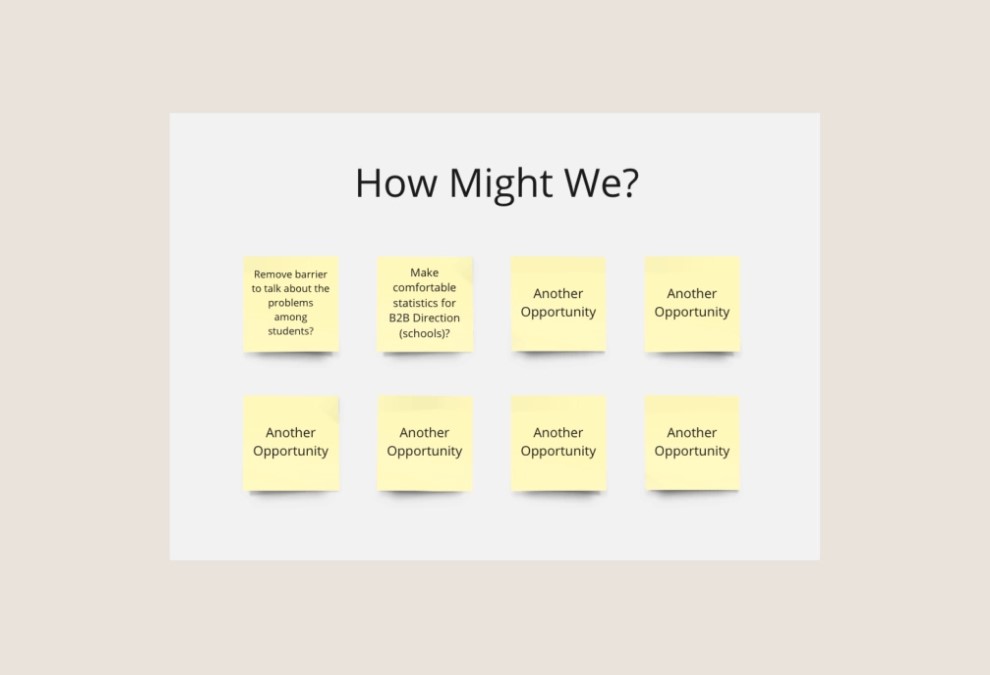
- Define the Problem with HEART
After pinpointing a bunch of pain points, it’s time to get specific. We define the problem by setting clear goals and success metrics. What’s the difference between metrics and signals, you ask? While signals show signs of desired behavior, metrics give you the hard numbers to track it.We zoom in on Engagement (the ‘E’ in HEART). Let’s say our goal is to show students that consultations aren’t scary. Our metric? Number of sessions. And the signal? Whether they book consultations.Summing it up, our challenge is to reduce fear and doubts at the booking stage, boosting the session numbers.
- Sketching Solutions
Next, we brainstorm solutions to tackle these fears. From adding a chat feature to enhance privacy to introducing anonymous modes—everything’s on the table. We sketch out these ideas and let everyone vote on them.
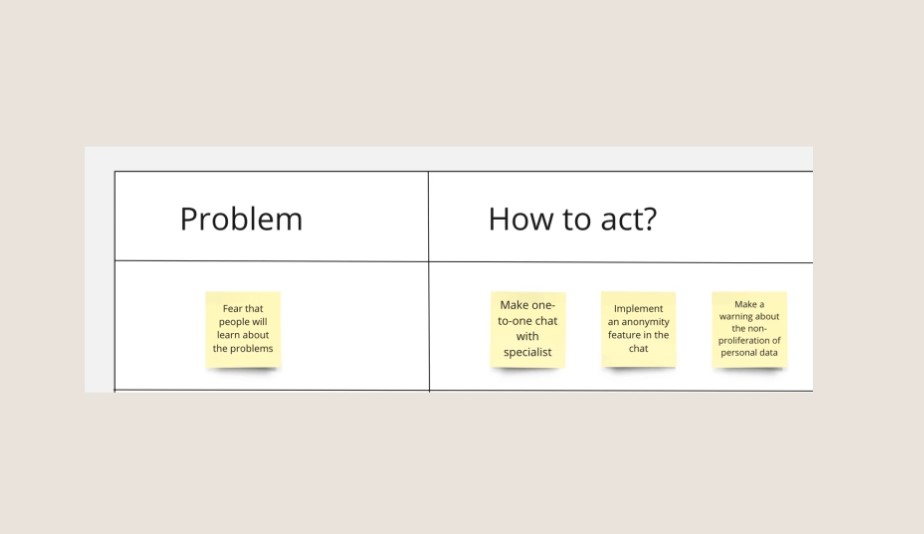
For instance, let’s consider the mental health app “Allbry.” We identified that students were hesitant to discuss their issues, leading to low app engagement.
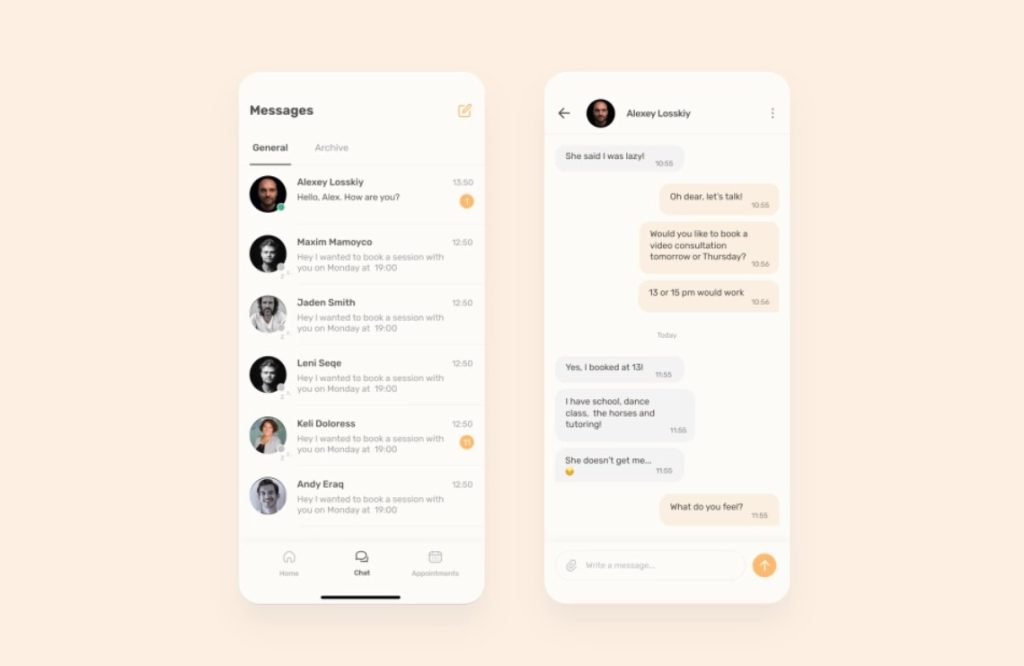
So, what did we do to address this?
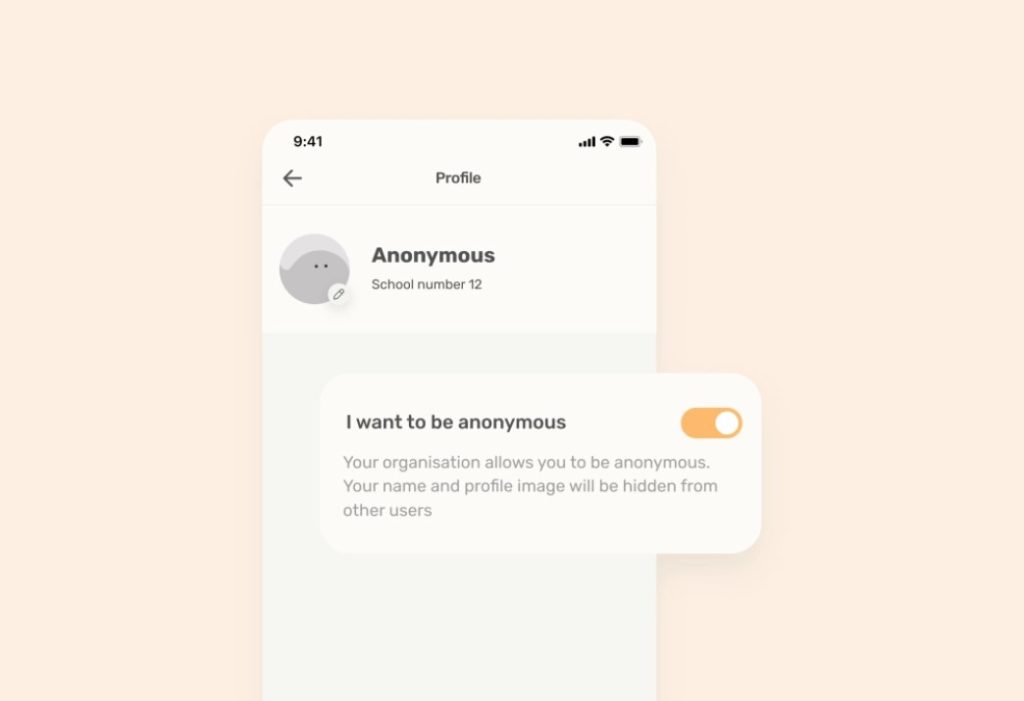
Introduction of a Chat Feature: We incorporated a chat function to tackle the primary barrier – the fear of judgment. By enabling chat, we provided a layer of anonymity, making students feel safe and more willing to engage without the pressure of face-to-face interactions.
Adding Anonymous Mode: To further enhance communication privacy, we introduced an “Anonymous mode.” This feature ensures that students can openly discuss their sensitive issues without fear of exposure, promoting a supportive environment for getting the help they need.
Crazy 8’s Method: want more ideas before mhealth app development? Enter the Crazy 8’s method—sketch eight ideas in eight minutes. This rapid-fire exercise helps us refine our initial ideas, ensuring we consider all angles, like balancing student anonymity with schools’ data needs.
The aim is to closely examine our ideas, like the chat feature, and explore additional enhancements or alternatives. Sometimes, one idea might conflict with another.
Take, for instance, the concept of eliminating fear through an anonymous chat feature. It’s a great solution, but what if schools also require statistical data, which anonymity might hinder?
Not all data might be essential, though. For our purposes, identifying the class and type of issues could be enough without needing to know names. We still capture the crucial information without compromising privacy. This approach balances student anonymity with the school’s data needs.
Next, we brainstorm the concept “addressing fear while meeting data requirements” to find a middle ground. As we conclude our eight-minute brainstorming session, all ideas are visually summarized and displayed on the wall for further review.
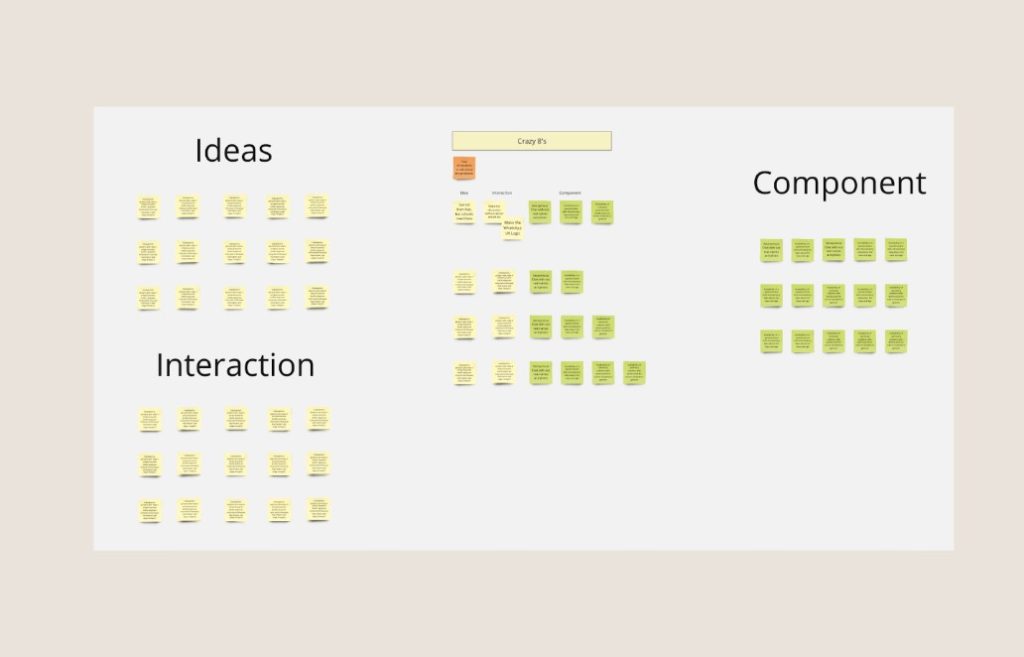
What is mhealth technology? It’s about “Interaction” and “Components.” For the concept “Alleviating fear while accommodating data needs,” we’ll integrate interactions that allow discussions without revealing names or pictures, alongside components that support anonymous data gathering.
In the “Interaction” section, we also contemplate how students prefer to engage with counselors. For instance, if your app includes chat or video call functions, it’s wise to align the user experience with familiar platforms like WhatsApp. This familiarity helps users effortlessly navigate the app.
Why WhatsApp, you might ask? Our target audience is students, and our research shows that WhatsApp is the most popular messaging app among them. Using a familiar platform reduces the learning curve and enhances user comfort.

In general, to solve such problems, we even wrote a separate article about Mobile health application development.
- Prioritize Solutions with a Decision Matrix
With a bunch of solutions sketched out, we use a Decision Matrix to see which ones pack the biggest punch for the least effort. It’s all about getting the best bang for our buck.
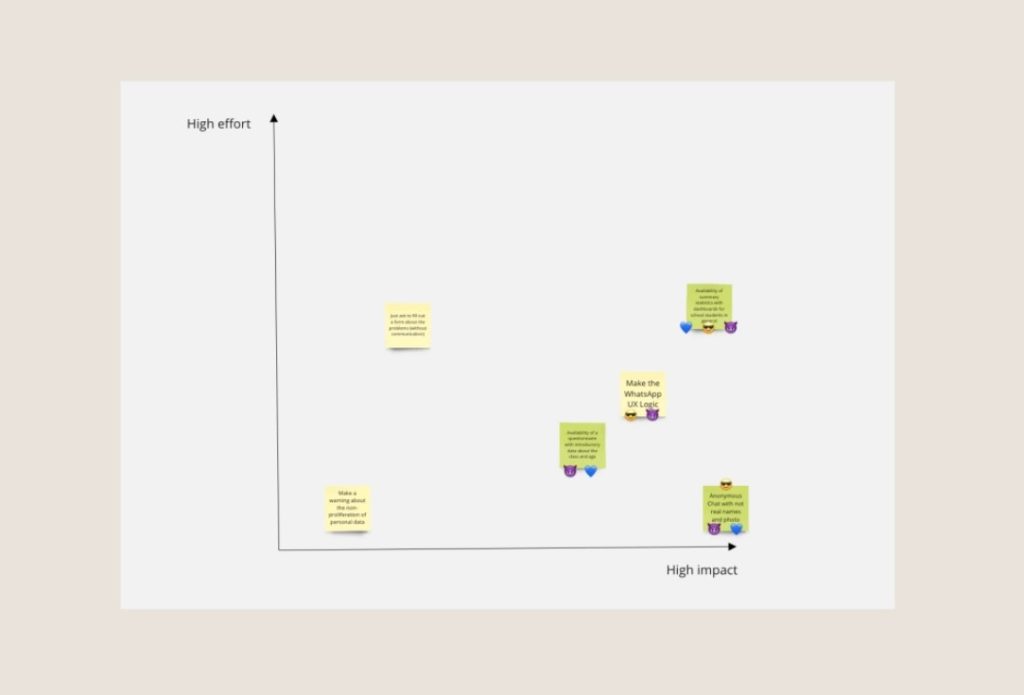
- Prototyping and mhealth app development
Chosen the best ideas? Great! Now we build a prototype. This isn’t just any mock-up; it’s a carefully crafted model that takes all our research and sketches into account, ensuring we’re truly meeting users’ needs.
- Testing and Iteration
After mobile health app development last but definitely not least, we test our prototype with real users. We gather a bunch of folks who match our target audience and see how they interact with our app. It’s like a trial run for our design, and boy, does it provide insights!Based on feedback, we might tweak and test again, ensuring our app isn’t just good, but great.
Here’s a streamlined guide on conducting user tests effectively:
- Gather Your Audience
– Start with your existing database to identify potential participants.
– Expand your search to places where your target audience naturally congregates, such as relevant Facebook groups, niche forums, and competitor blogs.
Pro Tip: Make sure to differentiate between tech-savvy users and those less familiar with digital products to ensure your app is accessible to all, including older demographics.
- Design your test
Develop specific tasks for participants, like locating a chat feature within your app.
- Document findings
– Note whether participants recall key brand elements like color schemes post-test.
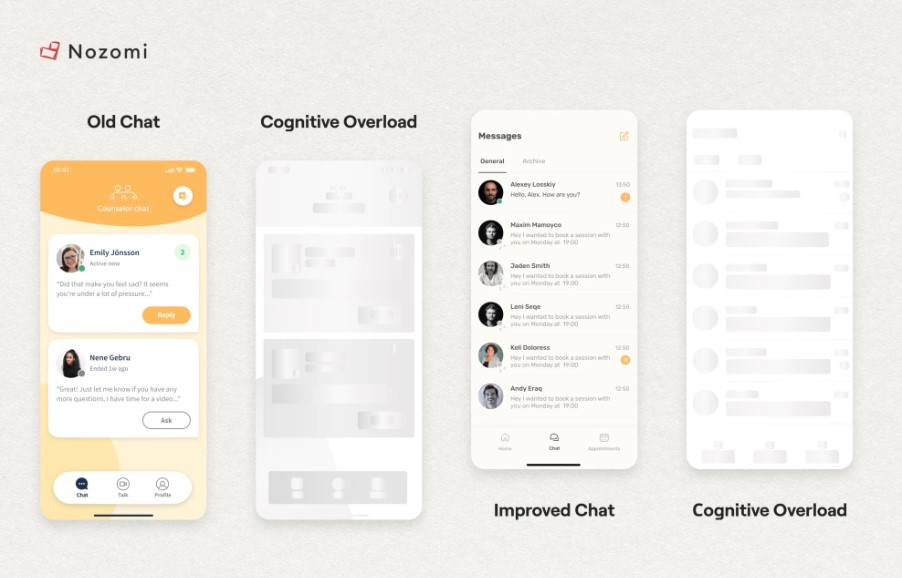
– Track navigational ease and whether all tasks are completed successfully.
After implementing these tests, the engagement in our app saw remarkable improvements:
– The number of chat sessions skyrocketed, multiplying 100-fold.
– User base growth was exponential, from 100 to 10,000 Swedish students within six months.
– Task completion rates soared by 32%, demonstrating enhanced usability and faster access to necessary information.
– These enhancements led to higher user engagement and increased registrations.
For a deeper dive into our testing process and insights that could benefit your projects, check out our detailed Design Review for mhealth applications. This article is packed with actionable strategies to refine your app’s user experience.
And there you have it—the nitty-gritty of making a healthcare app that’s not just functional but loved by its users. Want to see how these steps come to life in an app?
Conclusion
Yes, healthcare industry software has given rise to a wide array of applications that are revolutionizing the medical landscape. And we’ve explored mobile health app development of such applications. For a deeper dive into app creation and the right strategies, check out our book here.
Our mission is to empower healthcare startups in the design and development of digital products and to assist healthcare organizations in undergoing transformative changes.
If you’re curious about our work, explore our portfolio with case studies of mhealth applications at: https://studio.nozomihealth.com/work
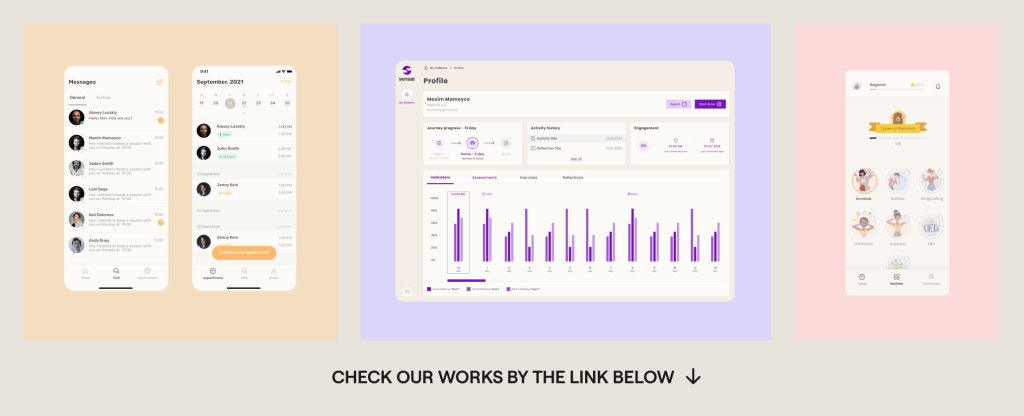
Or, feel free to email us at m@nozomihealth.com, and we can chat about how we can help your product deliver real benefits.


